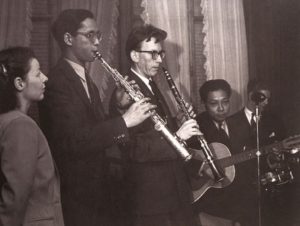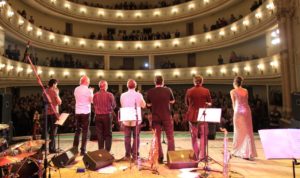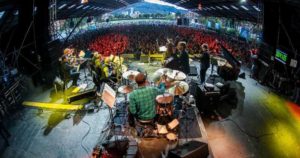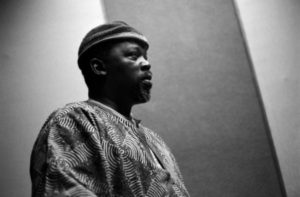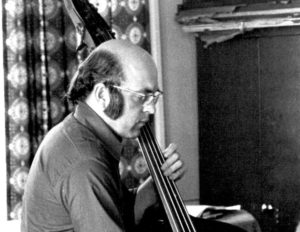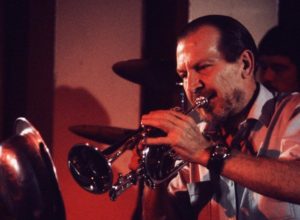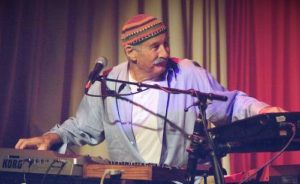Jazz in France
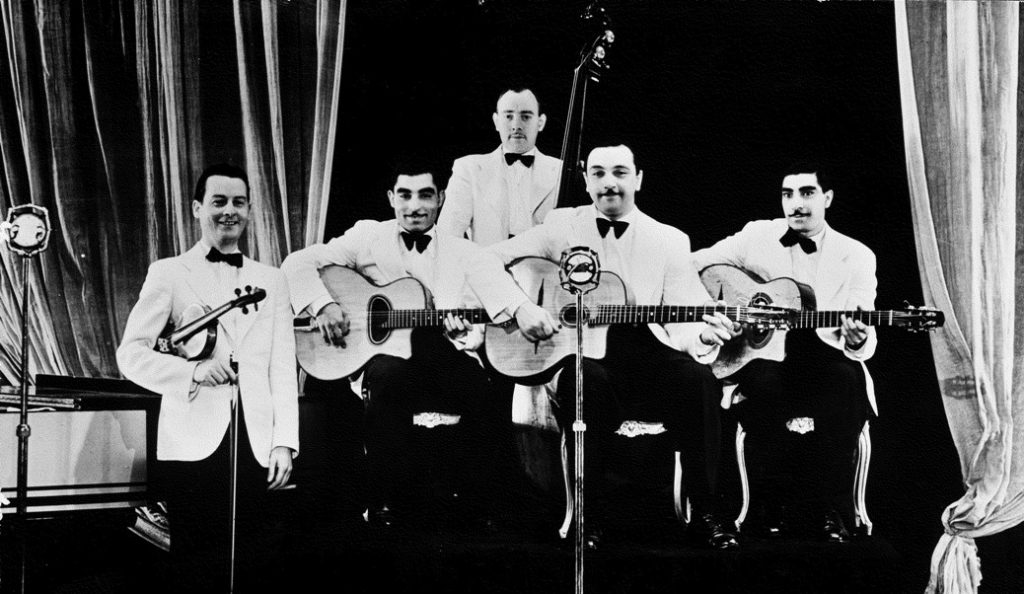
It has been said that France was the first country to take jazz seriously as an artform, before even America itself. It’s certainly true that French intellectual Jean Cocteau was celebrating jazz as early as 1918, though he didn’t use that word, but rather wrote of ‘American Negro orchestras’. French Classical composers Maurice Ravel and Darius Milhaud, as well as Paris-based Russian Igor Stravinsky, had all begun to incorporate jazz elements into their works by the 1920s. Black American culture was hugely popular in France between the two world wars, with dancer Josephine Baker (1906-1975) in particular causing a sensation as the headliner at the Folies Bergère in 1926.
American clarinettist Sidney Bechet (1897-1959) came to France in 1925 with the Revue Nègre that included Josephine Baker. He soon gravitated towards Chez Bricktop, a jazz club run by Ada ‘Bricktop’ Smith, which was a hub for the African American community in Paris from 1926, also attracting French high society and American ex-patriate artistic figures like Cole Porter, F Scott Fitzgerald, Ernest Hemingway and John Steinbeck (who was on one occasion thrown out for ‘ungentlemanly behaviour’). Bechet was incarcerated in Paris for a year for accidentally shooting a woman (he was trying to shoot a male musician in a duel…) and was deported in 1929. Bechet maintained great affection for the country though, and returned in 1950, becoming something of a French icon until his death in 1959.
By the 1920s, jazz bands were to be found in many of Paris’ top dance halls, like Le Moulin de la Galette. The band at Le Perroquet was led by saxophonist/clarinettist André Ekyan (1907-1972). One of the most important early figures in establishing jazz in France was the Ottoman-Armenian bandleader Krikor Kélékian (1898-1971), who founded the first magazine dedicated to jazz in 1929, the Revue du jazz. Known as Gregor, he also led the dance band, the Gregorians, which included among its sidemen Ekyan, clarinettist Alix Combelle (1912-1978) and the trumpeter Philippe Brun (1908-1994), who had spent time in London with the dance bands of Bert Ambrose and Jack Hylton. Brun also wrote record reviews for Gregor’s magazine. Both Combelle and Brun also worked for pianist and bandleader Ray Ventura (1908-1979), who was recording with his Collégiens from 1928, and who helped popularise jazz in the 1930s.
Bassist Louis Vola (1902-1990) was leading a dance band in Toulon, when in 1931 he recruited the talented 21-year old Belgian guitarist Django Reinhardt (1910-1953). In Paris, Vola organised jam sessions at the Hotel Claridge, where in 1934 Reinhardt and violinist Stéphane Grappelli (1908-1997) first had the chance to play together. In 1931, students of the prestigious Lycee Carnot, Charles Delaunay (1911-1988) and Hugues Panassié (1912-1974) had founded a jazz appreciation society, the Hot Club de France. One enthusiastic member, Pierre Nourry, was sufficiently impressed with the music being played at these jam sessions that he persuaded the musicians to start a permanent group under the name Quintette du Hot Club de France. The quintet was completed by rhythm guitarists Joseph Reinhardt (1912-1982) and Roger Chaput (1909-1994). Their guitar-based ‘gypsy jazz’ was unlike anything that came out of America, and their prolific recordings from the 1930s document perhaps the first truly world class jazz made by non-American musicians. Grapelli and Reinhardt also worked with visiting Amercian musicians like violinist Eddie South (1937), harmonica player Larry Adler (1938), and some memorable sessions with Coleman Hawkins and Benny Carter, with Grappelli on piano, and also featuring André Ekyan and Alix Combelle.
It was at a Coleman Hawkins concert in Salle Pleyel in 1935, that the Hot Club of France first issued a one-page Jazz Hot, which soon became a full jazz magazine, after Downbeat the longest running in the world. In 1939, the magazine ceased publication for the duration of the Second World War. It returned in 1945 under the leadership of Delaunay, who had spent the war working for the Resistance. During the Nazi occupation, jazz was supposedly banned or at least strongly disapproved of, but Panassié was able to continue broadcasting American jazz on French radio, so long as he artfully changed song titles and band names. ‘St Louis Blues’, for example, became ‘La Tristesse de Saint Louis’. Ventura, born into a Jewish family, moved to South America, and Grappelli spent the war in England.
more to come…
